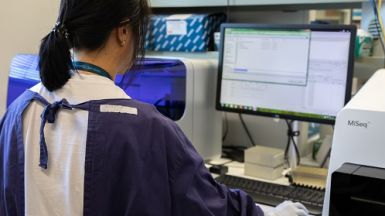
Contact tracing: What is it?
By now you’ve probably heard the term ‘contact tracing’ mentioned quite a lot in relation to COVID-19 cases.
Contact tracing is a process used to understand how an infectious disease is spreading in a community.
Contact tracing has two purposes: to figure out who a sick person caught an illness from, and to find out who they’ve been in contact with while infectious.
When a person in Queensland is diagnosed with an infectious disease like COVID-19, Queensland Health uses contact tracing to figure out where the person caught the virus and who they might have passed it on to.
Contact tracing is a process conducted by health professionals all around the world, and in Queensland, there are specialist teams who spring into action when a situation like the current novel coronavirus (COVID-19) pandemic occurs.
How does contact tracing for COVID-19 work?
When a person in Queensland is diagnosed with COVID-19, the Public Health Unit (PHU) for the area they live in is notified.
The PHU is staffed with infectious disease specialists, whose job is to understand how diseases like COVID-19 spread.
These specialists work with the person who is unwell to trace their movements back to the potential person who they caught the virus from.
At the moment in Queensland, Queensland Health can still trace almost every case back to another confirmed case or high-risk activities, like having recently travelled overseas.
It’s important that we do this backward tracing, so that we can understand how the virus is spreading in the Queensland community.
As it becomes more widespread, it may become more difficult for the PHU experts to figure out where each infected person came into contact with the virus.

Notifying people at risk
The second stage of contact tracing involves getting in touch with people who may have been in contact with and infected by the person confirmed to have the disease.
When it comes to COVID-19, people can incubate the disease for over a week before they show symptoms and realise they have been infected.
This means they need to backtrack to remember all the people they’ve recently been in contact with, which can be tricky work.
The PHU specialists will help them be as clear as possible about where they’ve been and who they’ve seen.
Where possible, the people who are at risk of having been infected will be contacted directly by the PHU and given instructions about what they need to do.
If it’s not possible to contact people one-on-one, Queensland Health will instead put out a public health alert with the details of the person’s movements, so the public can help us get in touch with those who might have come into contact with the person with the infection.
So far, we’ve done this for cases where people have worked in shopping centres or attended university classes, and may have been in close contact with people they don’t personally know.

Why doesn’t Queensland Health tell the public all the details about where every confirmed case has been?
There are a number of reasons why it’s not a good idea, or even legal, to give the public all the details about the movements of a confirmed case while they might have been infectious, if Queensland Health can contact people at risk directly instead.
Because of how COVID-19 spreads, it’s very unlikely a person will catch it from someone without spending a significant amount of time with them.
People are at higher risk of infection if they have had face-to-face contact with a confirmed case for 15 minutes or more, or have shared an enclosed space with them for more than two hours.
The risk for people that may have passed a confirmed case on the street or in a shop is extremely low, because people probably won’t catch this particular virus in those situations.
If public officials told the public, though, that they’d possibly crossed paths with someone who is a confirmed case, it might actually cause negative impacts, even though people most likely haven’t contracted the virus they may be left feeling anxious that they may be sick.
It can also put a massive strain on the health system, because a lot of people who are not at risk become worried they have the virus and require medical attention.
Releasing extra details about confirmed cases can also be unsafe for them.
If Queensland Health publicly released information about where a person lived or where they worked when they didn’t need to, it could impact their personal safety, the privacy of their family, and the security and success of their workplace.
Queensland Health’s contact tracing is done so well that they don’t need to release this information and run these risks.
There are also privacy laws to limit the kinds of information that can be shared publicly about a person receiving healthcare.
These laws protect the privacy of all Queenslanders and health officials abide by them during all situations.
Why is contact tracing for COVID-19 done differently to measles?
Many Queenslanders will be familiar with the way Queensland Health does contact tracing and public health alerts for measles and might be wondering why it’s different for COVID-19.
As far as viruses go, the virus that causes COVID-19, called SARS-CoV-2, isn’t the most contagious one around.
It’s not an airborne virus (which means it doesn’t hang in the air waiting to infect people), a person would need to be around someone who is infected with it for a little while before they at a high risk of contracting it.
Measles, on the other hand, is highly contagious, and people can become infected by spending a really small amount of time near someone who is infected.
When someone in Queensland is confirmed to have measles, Queensland Health does really broad public messaging about where the person has been and what they’ve done, because rather than identifying just the people who spoke to the infected person for 15 minutes, they need to tell every single person who might have crossed their path.


